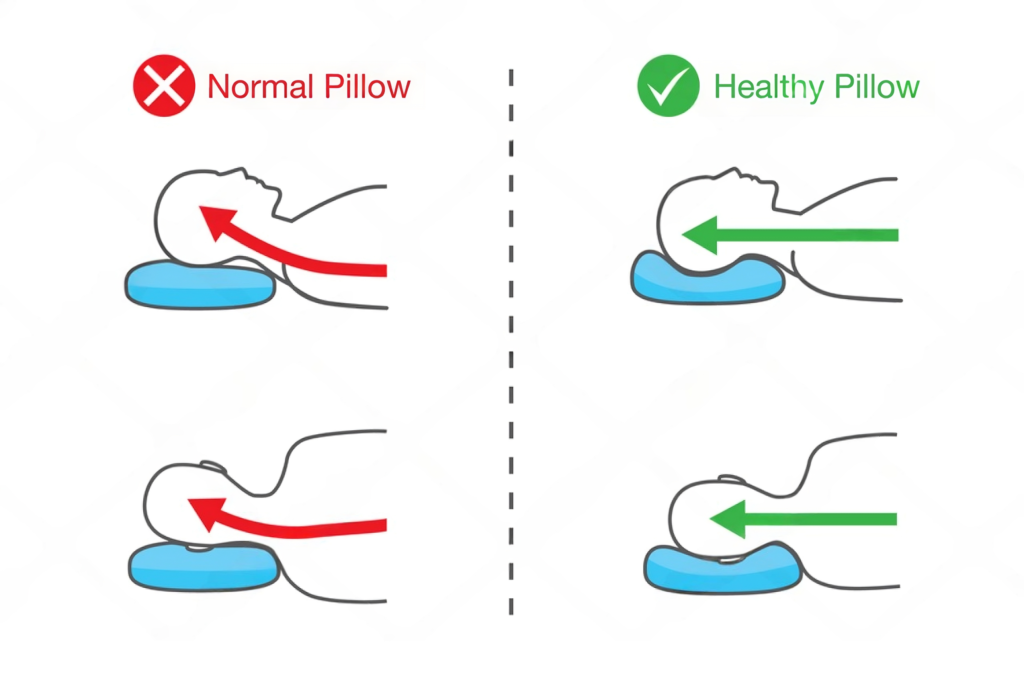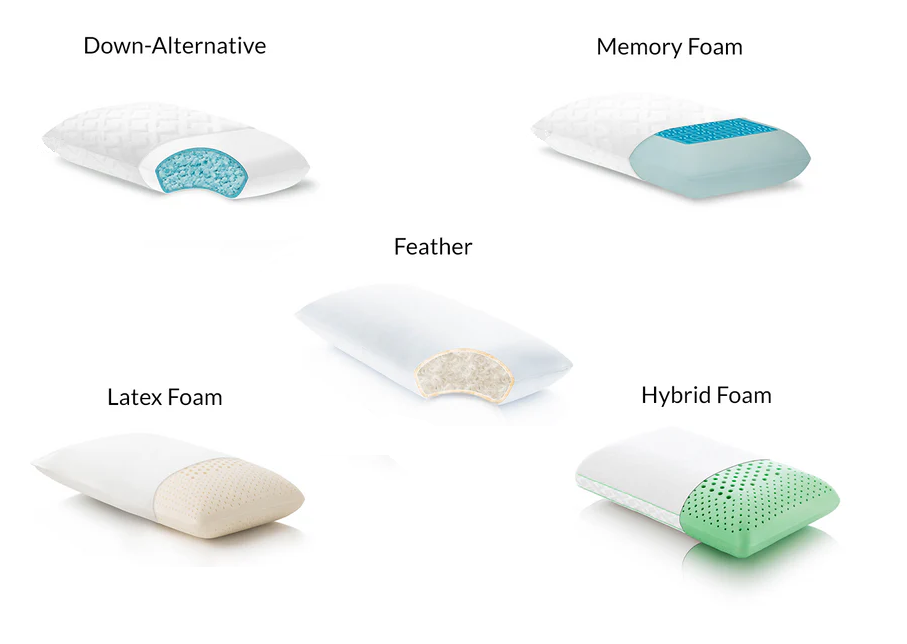Introduction
A good night’s sleep starts with the right pillow. Whether you’re looking to improve your sleep quality, reduce neck pain, or simply find the right fit for your sleeping style, the pillow you choose can make all the difference. In this guide, we’ll help you understand how to select the perfect pillow to match your needs and ensure restful nights.
Why Your Pillow Matters
Your pillow is more than just a sleep accessory—it plays a crucial role in supporting your spine, aligning your neck, and enhancing overall comfort. The wrong pillow can lead to discomfort, restless nights, and even long-term health issues.
Key Benefits of the Right Pillow:
- Better sleep quality
- Reduced neck and back pain
- Improved posture while sleeping
- Allergy relief with hypoallergenic options

How to Choose the Right Pillow for You
Selecting the perfect pillow depends on several factors, including your sleeping position, personal preferences, and any specific health concerns. Let’s break it down:
1. Consider Your Sleeping Position
- Back Sleepers: Look for medium-firm pillows that support the natural curve of your neck.
- Side Sleepers: Opt for firmer, thicker pillows to keep your neck aligned with your spine.
- Stomach Sleepers: Choose soft, flat pillows to reduce strain on your neck.

2. Material Matters
Pillows come in various materials, each with unique benefits:
- Memory Foam: Contours to your shape for customized support.
- Down and Feather: Luxurious and soft, with adjustable firmness.
- Down Alternative: Hypoallergenic and budget-friendly.
- Polyester Fill: Affordable and lightweight, ideal for occasional use.

Popular Pillow Types
At All Around Pillows, we offer a wide range of pillows designed to meet diverse needs. Here’s a quick overview of some of our popular options:
- Polyester Bed Pillow: Hypoallergenic and eco-friendly, made from recycled materials.
- Down Alternative Pillow: Luxurious comfort without the allergens.
- 10/90 Bed Pillow: A perfect blend of down and feathers for firm support.
- 100% Down Pillow: Cloud-like softness for ultimate relaxation.

Caring for Your Pillow
To extend the life of your pillow and maintain its comfort:
- Wash removable covers regularly.
- Fluff pillows daily to maintain their shape.
- Replace pillows every 1-2 years, or when they lose their support.
Cleaning Polyester and Alternative Down Pillows
Cleaning pillows made of polyester or alternative down is pretty straightforward and can help keep them fresh and fluffy. Here’s how you can do it:
Most polyester or alternative down pillows are machine-washable, but it’s a good idea to check the care label first just to be sure. Wash them in a front-loading washing machine if possible—top-loaders with agitators can be a bit rough on them. Use a gentle cycle with warm water and a mild detergent. Toss in two pillows at a time to keep the machine balanced, or just one if it’s a king-size.
After washing, rinse them thoroughly to get rid of any soap residue. Then, pop them in the dryer on a low heat or air-fluff setting. Throw in a couple of clean tennis balls or dryer balls to help break up clumps and keep the filling fluffy. It might take a couple of cycles to dry them completely—make sure they’re dry all the way through to avoid any musty smells.
If you’d rather not use a machine, you can spot-clean them by mixing a little mild detergent with water, dabbing the dirty spots with a clean cloth, and letting them air dry. Fluff them up by hand afterward.
How often do you wash your pillows? Doing it every few months can really make a difference!
Cleaning Feather Pillows
Cleaning feather pillows is a bit different from polyester or alternative down, as feathers need some extra care to stay in good shape. Here’s how you can tackle it:
First, check the care label to confirm your feather pillow is machine-washable—most are, but some might recommend dry cleaning. If it’s good to go, use a front-loading washing machine to avoid the agitator in top-loaders, which can damage the feathers. Wash one or two pillows at a time (two helps balance the load) on a gentle cycle with warm water and a small amount of mild, liquid detergent—too much soap can leave residue.
To protect the pillow, you might want to slip it into a pillowcase and tie or zip it shut so feathers don’t escape if there’s a small tear. Run an extra rinse cycle to make sure all the detergent is out—feathers can clump if soap lingers.
For drying, use a dryer on a low heat or air-only setting. Add a few clean tennis balls or dryer balls to fluff up the feathers and prevent clumping. It can take a while—sometimes 2-3 hours—so check every 30 minutes, fluff by hand, and keep going until they’re completely dry. Damp feathers can get musty or even moldy, so don’t rush this step. If you’re air-drying instead, place them flat in a well-ventilated spot out of direct sunlight, flipping them occasionally.
If machine washing feels risky or the label says no, spot-clean with a damp cloth and a tiny bit of mild detergent, then air-dry thoroughly. Another option is taking them to a dry cleaner if you’re not up for the DIY approach.
Ever tried cleaning your feather pillows before, or is this your first go at it?
Conclusion
Choosing the right pillow is a small change that can make a big impact on your sleep quality and overall well-being. At All Around Pillows, we’re committed to helping you find your perfect match. Explore our wide range of pillows and give yourself the gift of better sleep today!
Call to Action:
Ready to upgrade your sleep? Check out our collection of premium pillows and enjoy restful, rejuvenating nights!


